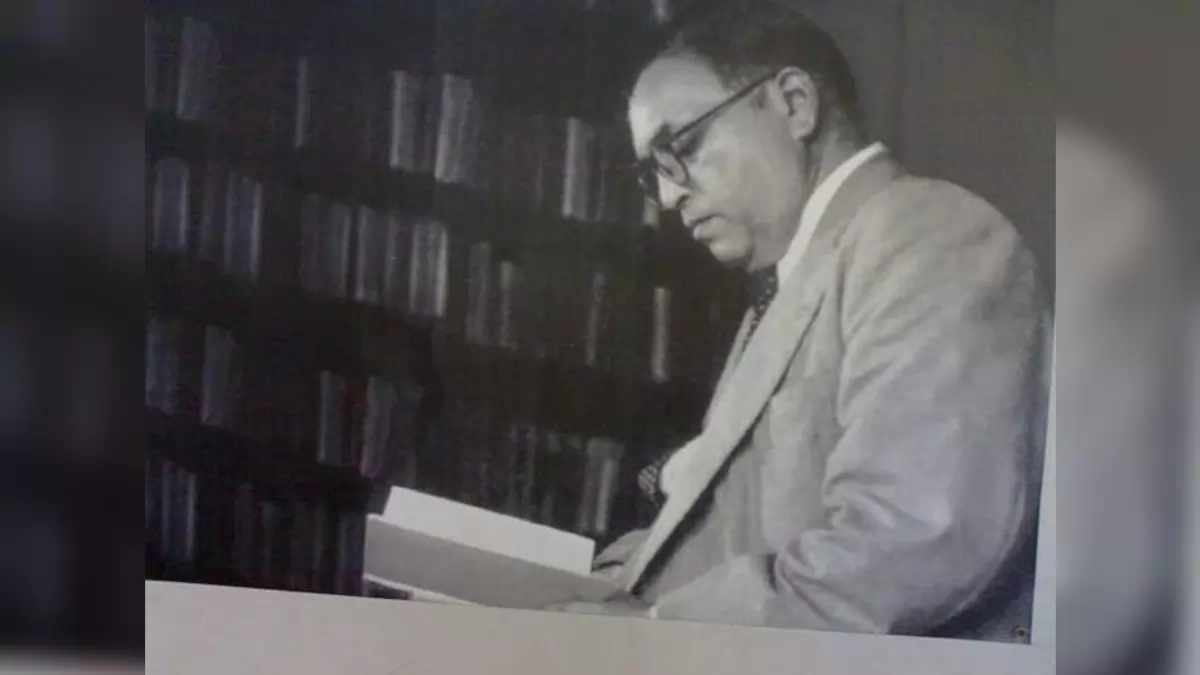
Wikipedia
New Delhi: As we approach the solemn occasion of Mahaparinirvan Diwas on December 6, we pay homage to the architect of the Indian Constitution, Dr. BR Ambedkar. This day marks the death anniversary of Babasaheb Ambedkar, a towering figure in India's history and a relentless crusader against casteism and social injustice.
Mahaparinirvan is a fundamental principle in Buddhism and it literally translates to 'Nirvana after death.' Dr. Ambedkar, having embraced Buddhism in 1956, exemplified the pursuit of spiritual enlightenment beyond mortal existence. Buddhism teaches that attaining Nirvana liberates an individual from worldly desires and illusions.
On this poignant day, Mahaparinirvan Diwas, people across the nation unite in remembrance. Statues of Dr. B. R. Ambedkar become focal points for tributes, adorned with flowers and garlands. Lamps and candles are lit to symbolise the enduring light of his ideas, illuminating the path towards social equality and justice.
Numerous programs are organised nationwide to commemorate the legacy of Babasaheb Ambedkar. These events serve as platforms not only to recall his profound thoughts but also to narrate the inspiring story of his struggles. Here are some interesting facts about his life.
Dr. Ambedkar distinguished himself as one of the most educated scholars of his era. With degrees in 32 different subjects, including a PhD from Columbia University, he shattered barriers, becoming the only Dalit student in Elphinstone College.
His love for knowledge extended to a passion for books. Dr. Ambedkar amassed an impressive collection, reaching 35,000 books by the time of his passing. This intellectual curiosity fueled his lifelong quest for social reform.
Ambedkar's journey was marked by adversity. Despite being the son of a Subedar in the British Indian Army, his Dalit identity presented challenges. He, however, became the sole Dalit child in his school, breaking societal norms and paving the way for future generations.
Babasaheb Ambedkar drew inspiration from the teachings of Kabirdas, Jyotiba Phule, and Mahatma Buddha. Their philosophies shaped his vision for an egalitarian society.
His birth name was Ambawadekar, as recorded by his father. However, a teacher changed it to 'Ambedkar,' a surname that would etch itself into history.
Dr. BR Ambedkar's legal acumen played a pivotal role in crafting the Indian Constitution. Acknowledged as the 'father of the Constitution,' he meticulously studied global constitutions, securing the position of India's first Law Minister.
To combat atrocities against Dalits, Dr. BR Ambedkar launched newspapers like 'Bahishkrit Bharat,' 'Mook Nayak,' and 'Janta.' These publications raised a powerful voice against untouchability and casteism.
In 1951, Dr. BR Ambedkar presented the 'Hindu Code Bill' in Parliament, advocating for gender equality. He believed in empowering women with equal property rights, resigning from the Cabinet when the bill faced resistance.
On October 14, 1956, Dr. BR Ambedkar and his followers embraced Buddhism, adopting the Panchsheel. Dissatisfied with certain Hindu practices, this spiritual transition marked a significant chapter in his life.
Tragically, on December 6, 1956, Dr. BR Ambedkar left this mortal realm. His teachings, however, continue to resonate, guiding India towards a more just and inclusive future.





Copyright © 2026 Top Indian News
